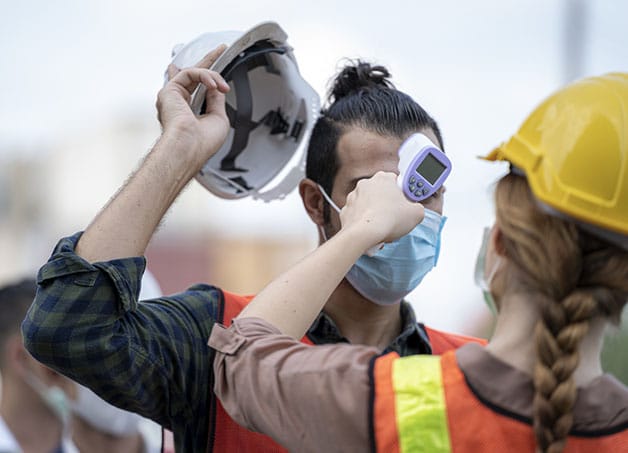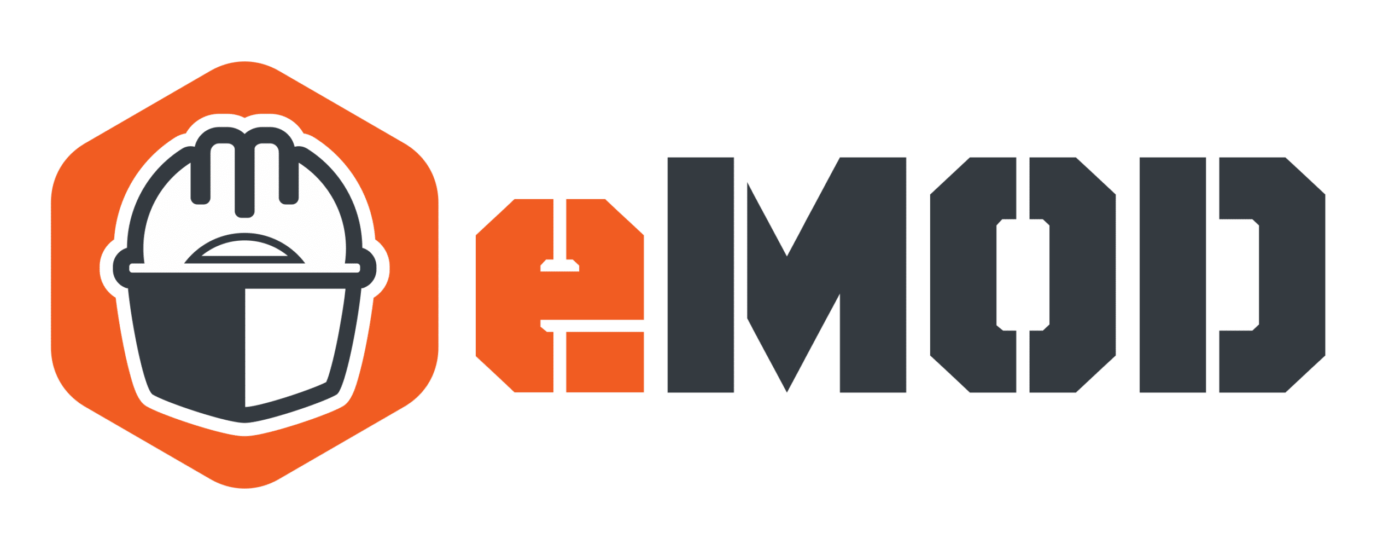
By Bob Marshall
There’s no hiding this behind a mask: Working in construction during a pandemic can really suck. Projects take longer. From wearing PPE that slows us down to properly sanitizing job sites and tools, virtually everything we do requires extra time and steps. In our work at Dome Construction, we estimate that a project during COVID-19 costs an additional 2-5%, because of the additional safety precautions and project delays. All of it, of course, is necessary to be compliant with local health mandates — and to prevent outbreaks that might bring projects to a halt and have an exponential impact on cost.
But here’s the thing. It’s all manageable — and for the time being, there is no alternative. And of course, more important than cost or schedule is the safety of our workers. This is, after all, just a job.
Since March, on the job sites that I’ve managed, I’ve had two positive cases and multiple scares. All of them required a coordinated response, careful communication, and quick action.
If you’re working in construction, or in any other type of workspace where a COVID-19 outbreak could occur, here are six things you and your company can do to make it more manageable:
1. Have a (documented) plan
When COVID-19 first took hold in the U.S. in March, many companies shut down their offices and required employees to work from home. Of course, when your job is to build offices, you can’t work remotely. So, when the first shelter-in-place orders started to hit the San Francisco Bay Area, our company paused for a few days, held lots of meetings, and discussed operational procedures for our new reality. In those early days, many types of construction were deemed an “essential service.” So, we were allowed to continue working on most of our projects.
Ultimately, it was up to job project managers like me and superintendents to implement precautions on job sites based on what we discussed in those early meetings. Of course, there was a lot of interpretation and unknowns in those early days — undocumented procedures create ambiguity and, inevitably, inconsistent application of that guidance.
Fortunately, while project managers and superintendents like myself struggled early on, our safety team at Dome Construction was rapidly working on documenting our Covid Action Plan. This 35-page document, first rolled out in April, became our everything-manual for how to prevent, prepare for, respond to, and manage COVID-19 outbreaks. Having this document relieved a lot of anxiety. There’s no more ambiguity. Everyone now knows where to find the policies. And while the document prescribes additional actions we all need to take, we were able to refocus our mental energy on what we do best: builldling.
Our guide has been very well received by our partners and we’re happy to share it here, too. Simply complete the form below and we will send it to your email address.
2. Prohibit risky behavior
There’s a certain bravado when it comes to working in construction. We all know people who think they’re immune to the hazards of our job. And unfortunately, some people just aren’t taking the risks of COVID-19 serious enough. It’s one thing to take an unnecessary risk when it’s just you; it’s quite another when you are putting the health of others and their loved ones at stake.
Simply put, there’s no room for bad behavior when it comes to COVID-19. So, make sure to post clear policies on the job site for what’s acceptable or not for wearing masks, maintaining safe distances, and site cleanliness.
And then, apply a zero-tolerance policy for rule-breakers. If you don’t, there may be other consequences. Unfortunately, we’ve heard about jobs that have been delayed when inspectors identified workers who weren’t wearing masks and simply walked off the job.
One set of tools that’s helped: Our Dome Construction safety team designed a series of signs related to our Action Plan that provide proper notice at a job site, including:
- A reminder to take a COVID-19 survey prior to entering a job site
- An infographic of steps workers need to take to avoid spreading the virus
- A reminder to wash hands before starting and after finishing work, and a separate guide to thorough washing
- A notice to require safe distancing
We post these signs at every active job site:
3. Prepare for the inevitable
COVID-19 has proven to be both highly contagious and very difficult to track — largely because those who are infected (and contagious) may not show symptoms for several days after exposure or never at all. It goes without saying that you need to do everything you can to make your job sites safe, following all safety protocols. But it’s also inevitable that someone on big jobs will contract the virus (whether on the job or outside of work), OR show symptoms that might suggest they have.
So, accept this inevitability and be prepared. Make sure you know your company’s policies. And anticipate your next steps before anything happens. Then, when someone does get sick, you know exactly what you need to do.
4. Don’t panic
So, what do you do when you get a call and find out one of your crew has a fever? Easier said than done, but don’t panic. Don’t start complaining about how it’s probably COVID-19, nor speculating that the project is probably going to shut down and there’s going to be costly delays. The worst thing you can do is spread rumors based on partial information.
Instead, follow your documented plan. In our case, our first step would be to refer our worker to a qualified facility for a COVID-19 test or a doctor visit. And depending on the results, we determine the next steps.
If there’s a positive test, you might have to shut down a job site or portions of it for a period of time. But there’s no sense in panicking until you know more.
5. Communicate like the pro that you are
As I said above, the worst thing you can do when you first get a report that someone on a job site may have contracted COVID-19 is to start speculating and spreading incomplete information.
However, communicating the right information to those who need to know is crucial. This (again) should be covered in your overall action plan. Once you get that first report, you might start investigating details about where the person was working on the site, identifying his/her crew, and assessing risks — before you get the test result. This takes careful communication. And it also requires that you protect the anonymity of the worker.
And once you get a test result, you must then follow up with anyone you’ve already spoken with about the result. If it’s positive, then there will be more communication as your team investigates the exposure level of other team members (through contact tracing) and areas of the job site that may be contaminated.
In a nutshell, you’ll need to communicate like a pro, straddling the line between offering transparency to those who need to know and avoiding creating a rumor mill.
6. Know that you’ll be better off for the next pandemic
Last but not least, it’s important to come to grips with this: We’ve never experienced anything quite like this in our careers. And we may not (hopefully) deal with anything quite like this again. But the layers of complication that COVID-19 have created will make the construction industry more prepared to handle anything that might come our way in the future. We’ll be better off for having gone through this. And our jobs might just be a little safer. That’s not a bad thing, right?
About eMOD
Founded in 2017, eMOD is a team of experienced commercial construction superintendents, project managers, and safety officers from San Francisco-based Dome Construction. Safety is more than our passion; we’ve built a company and a product dedicated to making our industry safer. The eMOD Safety App is designed for the next generation of construction owners, insurance companies, general contractors, subcontractors, and tradespeople. The app includes COVID-19 safety features, such as contact tracing, speedy screening, and jobsite entry, cloud-based documentation, and customizable COVID-19 safety audits.
We not only built the app, we use it every day. Contact us to set up a demo today.
Bob Marshall is co-founder of eMOD and a project manager for Dome Construction.


